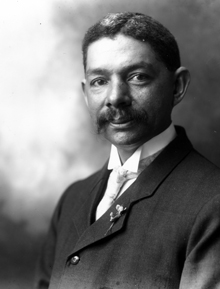First African American architect made bold statement
In a new book, architecture emeritus professor Ellen Weiss explores the life and work of Robert R. Taylor the first African American graduate of Massachusetts Institute of Technology, and the first academically trained black architect in the United States.

Robert R. Taylor, the first academically trained African American architect, is the subject of a new book by emeritus architecture professor Ellen Weiss.
Robert R. Taylor and Tuskegee: An African American Architect Designs for Booker T. Washington (New South Books, 2012) looks beyond Taylor's “firsts” in African American history to thoroughly document his contributions at the Tuskegee Institute in Alabama at the turn of the 20th century.
Taylor designed and supervised the construction by students of most of the buildings on the grounds of Tuskegee, which, at that time, was “the biggest, richest and most developed school for African Americans in the country,” says Weiss.
Booker T. Washington, founder of Tuskegee, hired Taylor to create, in an ambitious way, a place for African Americans to learn the best practices of the day in farming, education and industry.
Washington's ideology of “self-help” and progressive education for blacks was more radical than he is often given credit for, says Weiss.
Tuskegee was located in the rural South, a hostile environment for black people of that era. Washington and Taylor were always circumspect about their goals for the designs of the Tuskegee buildings. But Weiss's intuition and her reading between the lines of the two men's correspondence tells her that the majestic columns featured on many of the Tuskegee buildings had a “sheer effrontery” to them.
In all of Western tradition, projecting porticos and grand pillars are symbols of authority. The Tuskegee buildings, designed by Taylor and promoted by Washington, were a societal challenge, says Weiss. They make the statement: We are equal.
